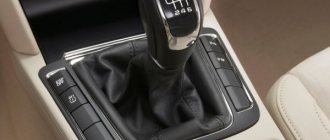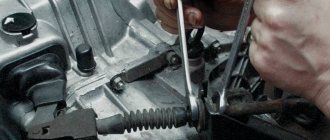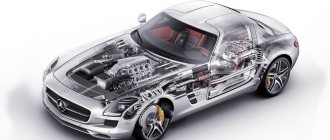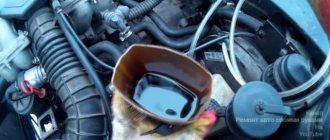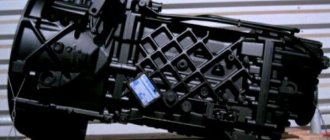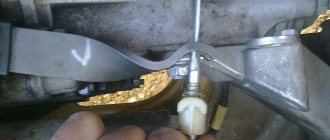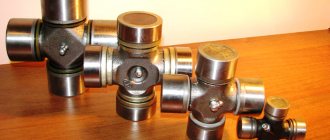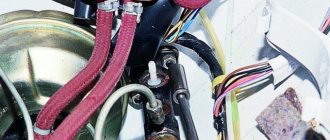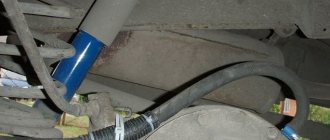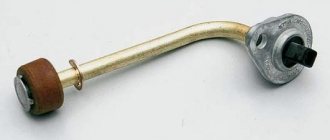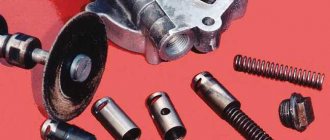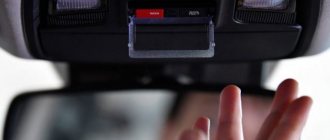For many modern car enthusiasts, the concept of double squeezing seems long forgotten. Experts still agree that you should not forget about this method. This is especially true when using manual transmissions. The use of this method is best considered before the advent of synchronizers.
In any case, any driver needs to know this as the basis of everything. Of course, this is not required for current generation technology, but anything can happen. With the help of such devices, speeds are equalized at different rotations of the shafts. Thus preventing the gears from locking. Only synchronizers were not introduced immediately. Initially, when changing gears, they used double squeezing or re-throttle. The use of the first technique is necessary to increase speeds, the task of the second is to reduce it.
Briefly about re-gasping and double squeezing
These procedures are necessary in cars with pedals without a gearbox equipped with synchronizers. It is worth noting the fact that they were not previously placed on boxes. Only after some time, with the advent of engineering developments and speculation that the machine should, in addition to being useful, also have ease of operation. This is how synchronizers entered the lives of motorists.
Riding in extreme conditions
Driving with slippage truly “kills” the clutch, which often happens in unforeseen, extraordinary conditions. When we happen to get out of a puddle or a snowdrift, we are forced to speed up the engine, giving it high speeds and sharply engage the clutch.
In this situation, not only the linings on the disk burn fatally. Such harsh operating conditions also threaten more serious damage, including to other vehicle components. Therefore, if possible, ask to be taken in tow. Don't burn the clutch.
Purpose of double squeeze
Mechanisms such as synchronizers facilitate the process of gear shifting, making it smooth. At the same time, wear is reduced and the specific grinding noise characteristic of older models is also eliminated. If there are no synchronizers or they are broken, you cannot do without double squeezing.
So why is it really needed? The need is due to the equalization of engine speed by gears and shafts. Otherwise, these parts may jam at best. In practice, this happens as follows: moving at first speed, the engine speed is increased to three thousand revolutions. To switch to second, you need to release the gas, squeeze the clutch, go to neutral. Then wait until the speed drops and press the clutch again, switch to second. In this way, the shafts are equalized without damaging the gearbox. Then you can move on calmly.
In the case of re-gassing, the process is a reverse action. This implies reducing the gear without putting the gearbox to sleep. If you need to turn on the road, but it is impossible to do this in fourth gear, you must slow down and lower the gear. Otherwise, there is a risk of stalling. You can smoothly release the gas by squeezing the clutch and move to neutral. The next action will be to gain momentum. To do this, you will have to activate the gas pedal, in other words, make a shift. That's it, after that we managed to increase the speed. Synchronization with the shaft has occurred. You can now downshift and continue driving.
It is recommended to adhere to the throttle pause at neutral during the process. The main thing here is to catch the right clutch moment in time to prevent the car from stopping. Skills come with experience, of course. Therefore, there are no special skills or secrets here.
The question arises: why is this necessary when modern cars are equipped with synchronizers? If you remember that often the road is not perfectly smooth, there are always some obstacles.
Therefore, synchronizers may fail on the first bump or climb. This is where re-gassing comes to the rescue. For example, when going up, you realize that this transmission cannot pull you through. There are simply not enough revolutions, the throttle is overloaded. This allows you to switch to a lower gear without losing the necessary inertia.
How to recognize the moment of setting?
In order not to stall when trying to start moving from a traffic light, you need to learn to recognize the moment the clutch engages. At this second, the engine begins to twitch and an experienced driver can accurately determine this condition. Having caught the moment, you need to smoothly press the gas pedal and follow the instructions described earlier. If everything is done correctly, the car will start moving without jerking or rolling back.
Studying the theory of how to brake and how to start is important and necessary. But practice is much more important - until knowledge is applied in a real situation, it is impossible to learn anything. After completing training at a driving school and obtaining a license, spend as much time as possible traveling by car. Start with simple areas with light traffic, and gradually move onto roads with heavy traffic.
About engine braking
There is a point that drivers should be aware of. Engine braking is necessary in case of brake failure. Also in case of heavy ice, steep descent. The ability to brake with the engine in such situations saves. While driving, if you feel that the brakes cannot cope, you need to switch to a lower gear, thereby increasing the speed. This will cause a drop in transmission speed. The car will slow down smoothly.
Then, in a similar way, you should switch until the threat disappears. You will be able to stop using the brakes or continue driving. Only this applies to mechanics. If it is automatic, you will have to overload the box, gradually reducing the speed. After waiting for the 90 km/h mark, you can transfer the car to second, again wait for the drop to fifty. Then you need to switch to low. This is not difficult due to modern machine designs. They can adapt to a specific driving style. Even if you let off the gas, the gear reduction will be carried out automatically, despite the lack of revolutions.
It is recommended not to neglect re-throttle, which can reduce the load on the synchronizers, ensuring that the traction force is maintained when switching to low gears.
What happens to the car when the clutch is depressed
Clutch is a mechanism involved in transmitting torque from the engine to the gearbox and then to the wheels of the car. It is necessary for smooth gear shifting, to start or stop the car. In other moments of movement, the clutch is not needed.
If such a situation nevertheless occurs, then the torque transmission is broken. This can lead to poor vehicle control or, worse, skidding.
The most dangerous moments for braking with the clutch disengaged:
- descent movement;
- driving on wet or icy road surfaces;
- driving on asphalt covered with debris or sand.
If you decide to brake with the clutch engaged, the torque will be transmitted evenly to all drive wheels. In such cases, the car is more stable, the load on the brakes becomes less, and stopping occurs smoothly.
The clutch pedal on a KAMAZ is pressed hard
Kamaz clutch jams
Very tight clutch release on KamAZ 6520.
Stiff clutch pedal? SOLVED! Lada Kalina.
The clutch pedal is too tight; the clutch is slipping; diagnostics; the clutch pedal has failed
KAMAZ REPAIR lost clutch #3
The clutch creaks and is difficult to press. How to lubricate the clutch fork without removing the box on a VAZ 2114
One of the reasons why the clutch does not disengage after assembly is with new driven discs.
If the gearbox is difficult to engage. Quick solution to the problem.
KAMAZ REPAIR clutch lost
Clutch, problems with hydraulic drive. (Part No. 2).
Also see:
- KAMAZ 6520 dump truck with sleeping bag
- KAMAZ 1978 release
- Tank for KAMAZ 700 liters
- KAMAZ prm 5820
- Springs for KAMAZ valves
- Roller bearing of KAMAZ input shaft
- Heated glass for KAMAZ
- KAMAZ head bolts size
- KAMAZ 5308 body
- How to replace rear springs on a KAMAZ
- Clutch for KAMAZ 740 diagram
- KAMAZ dump truck diagram
- Heating element for KAMAZ
- KAMAZ engine preheater instructions
- KAMAZ fuel level wire
Home » New » The clutch pedal on a KAMAZ is pressed hard kamaz136.ru
How to brake in a car with ABS
In a car without ABS, all 4 wheels lock when braking. ABS works in such a way that when braking, the wheels are blocked only for a short time, thanks to a sensor. As soon as he “realizes” that a wheel is blocked, he immediately sends an impulse to the solenoid valve of the hydraulic unit. As a result, the brake fluid pressure decreases or stops and the wheel rotates freely again.
The ABC system allows you to apply impulse braking without driver intervention. Therefore, there will be one simple rule: if the need arises for a quick stop, you just need to press the brake pedal all the way. Smart electronics will do the rest itself.
When off-road, you need to be guided by the situation: sometimes it is better to turn off ABS. For example, on a sandy slope, where it is important that the wheels are constantly blocked. Therefore, the driver needs to constantly assess the situation and not rely blindly on electronics.
Do you want the car to buck? Turn it down!
With downshifts the situation is somewhat more complicated than with upshifts.
If you are a novice driver and this is not obvious to you, do the following: accelerate to 50 km/h in 3rd gear, engage 2nd gear and quickly release the clutch pedal as usual. As a result, the tachometer needle will jump up sharply, and the car will jerk violently. Try it! Happened? This will always happen when moving from a higher gear to a lower gear, only the intensity of the jerk will be different depending on the speed and gear. Why does the jerk occur? As the sharply “bouncing” tachometer needle shows us, when the gear is lowered, the engine speed increases. If, when switching from II to III gear, the needle drops from 3500 to 2500 rpm, then when switching from III to II, on the contrary, it jumps from 2500 to 3500. This means that by including a lower gear, we forcibly accelerate the engine to higher revs. Since the rotating parts of the engine are heavy and inert, they resist spinning up, which is what results in the machine jerking. It turns out that the jerk is like a protest of the motor :)
When is it recommended to depress the clutch?
The opinion of car enthusiasts and experts is good, but it is better to rely on facts. To do this, you should refer to the technical documentation of automobile and power unit manufacturers. Starting the engine with the clutch depressed makes it easier to start the engine - this is a proven fact. Domestic car manufacturers definitely recommend carrying out this procedure when starting the engine.
Is it necessary to depress the clutch when starting the engine of foreign-made cars? Opinions and recommendations are divided on this matter. American automakers definitely recommend this. They explain their recommendation by saying that this is a safety measure. For example, Swedish automakers argue that their region is quite cold, and it is necessary to make starting the power unit easier.
As for Japanese and most European automakers, there are no recommendations on this matter. To be more precise, the technical documentation does not answer this question. And if you look at the current trend, most car manufacturers are completely abandoning the use of a manual transmission, and the clutch is being automated.
Life threatening!
Let us now consider several cases where even the most minor errors during braking can lead to tragic consequences.
The first is emergency braking, when the car needs to be stopped at all costs and as soon as possible. For example, a child suddenly jumped out onto the road or an accident occurred right in front of you. The driver’s actions in this case are extremely simple: immediately press the brake pedal to the floor until the car comes to a complete stop.
The clutch should only be released when the speed drops to the minimum level. This will prevent the engine from stalling and will give you freedom to maneuver in a situation where danger suddenly appears on the other side.
For example, you slowed down to a minimum, which allowed you to avoid a sudden road obstacle or let a pedestrian cross the road, but the car behind you did not have time to stop. This is fraught with the fact that he, by inertia, will ram the car that has urgently stopped in front of him. You can prevent this development of the situation by moving forward slightly or moving to the side. But you can do this only by maintaining full control over your car - when the engine is running and the gear is engaged.
A typical mistake made by many inexperienced drivers is pressing the clutch and brake simultaneously during emergency braking. This method will allow you to stop a bicycle faster, but not a car. If you stop pedaling a bicycle while pressing the brakes, it will stop faster, but this will not work with a car.
On car models without ABS, pressing the clutch and brake will definitely lead to wheel locking. As a result, the “iron horse” will simply bite the bit - that is, it will stop obeying the steering wheel and will fly in a straight path. If your car has built-in anti-lock braking system, things won't be much better.
All of the above fully applies to slowing down when entering a sharp turn. But here, in addition to the danger of losing control of the car, the likelihood of an uncontrolled skid is added. Depressing the clutch is especially dangerous when braking in difficult road conditions: for example, in icy conditions, on compacted crust or on wet asphalt. A sudden locking of the wheels at the moment of entering a sharp turn will inevitably cause the car to fly off the road.
